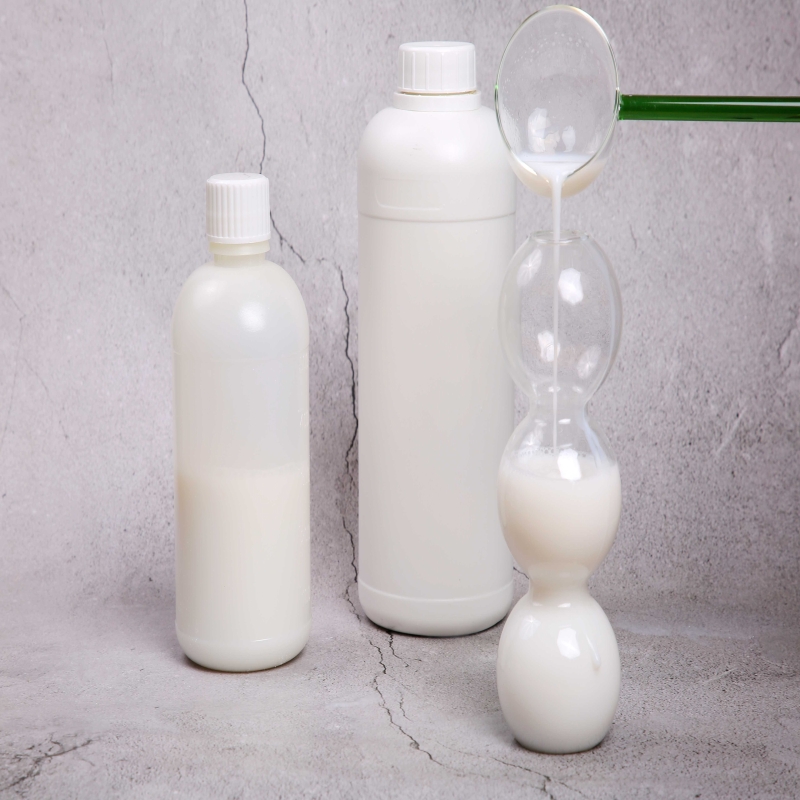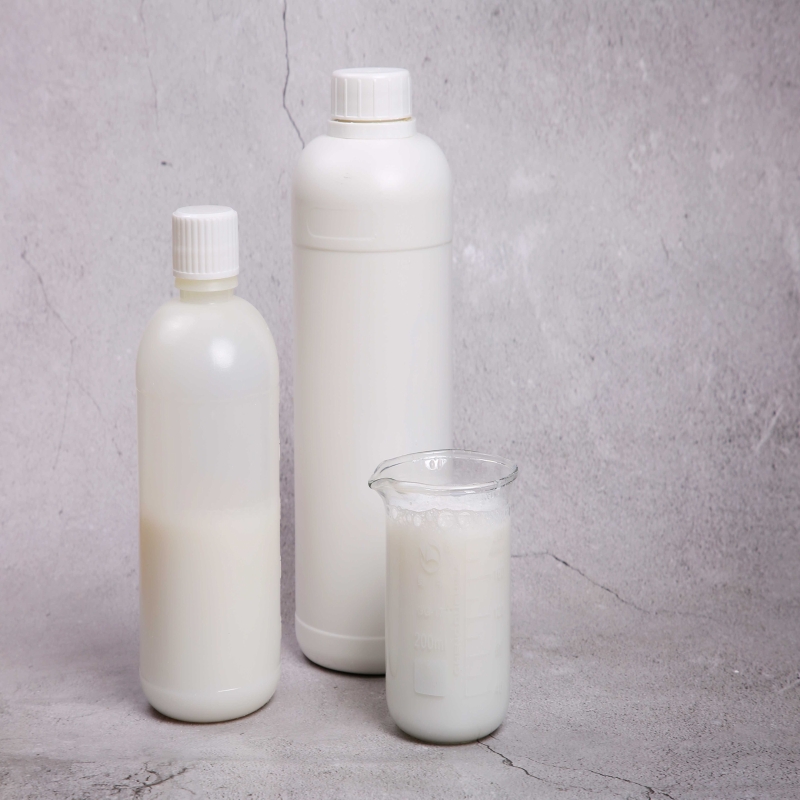-
Categories
-
Pharmaceutical Intermediates
-
Active Pharmaceutical Ingredients
-
Food Additives
- Industrial Coatings
- Agrochemicals
- Dyes and Pigments
- Surfactant
- Flavors and Fragrances
- Chemical Reagents
- Catalyst and Auxiliary
- Natural Products
- Inorganic Chemistry
-
Organic Chemistry
-
Biochemical Engineering
- Analytical Chemistry
-
Cosmetic Ingredient
- Water Treatment Chemical
-
Pharmaceutical Intermediates
Promotion
ECHEMI Mall
Wholesale
Weekly Price
Exhibition
News
-
Trade Service
Epoxy resin since the United States began industrial production in 1947, with its excellent adhesion, adhesion, stability, chemical resistance, insulation and mechanical strength and other characteristics are widely used in coatings, adhesives and composites and other fields. Water-based coatings prepared from a single epoxy resin have the advantages of environmental friendliness, but there is still a gap between water resistance and chemical resistance compared with solvent-based epoxy coatings, and application promotion is limited. Therefore, chemical workers try to modifie the water-based epoxy resin to improve the shortage of single water-based epoxy resin, and further expand its application
. Acrylic emulsion has good anti-fouling, toughness, weather resistance and other advantages, has been widely used in the field of coatings. At present, water-based epoxy resin-acrylic composite emulsion preparation methods are mainly solution poly-legal, emulsion poly-legal and so on. In this paper, combined with the current research status of water-based epoxy-acrylic emulsions at home and abroad, the advantages and disadvantages of water-based epoxy-acrylic composite emulsions in the key solution poly-legal and emulsion polymerization legal system are analyzed and summarized, and the improvement ideas are put forward.
1 solution poly-legal
In recent years, with the increasingly strict domestic environmental regulations, water-based epoxy resin-acrylic emulsion research has attracted much attention, there are currently two main preparation methods: First, physical mixing, such methods are simple to prepare, Products have the advantages of epoxy resin and acrylic, but epoxy resin content is low and storage stability is poor; Chemical change can be achieved through solution polymerization and emulsion polymerization. The solution poly-legal is divided into the esterification method in solvent system and the water dispersion method in solvent system. The esterification reaction is mainly esterification reaction through organic acid and inorganic acid and epoxy resin epoxy base, and then add weak alkali to the reaction product to neutralize it into salt, so as to achieve the goal of hydration of epoxy resin. The process of preparing a water-based epoxy-acrylic composite emulsion by ester reaction is simple and does not require emulsifying agents. However, due to ester-based hydrolysis, resulting in the stability of emulsion is not good, on the other hand, due to epoxy-based consumption, the resulting emulsion coating film corrosion resistance is not good, and can not achieve a single component of self-interlinking.
solution thwiring reaction method was first developed by Woo equal to 1982, generally the epoxy resin dissolved in solvents, and then put acrylic monosomes (e.g. methyl acrylic, acrylic, etc.) and triggers, heating reaction, so that epoxy resin molecules in the METHYLENE-CH2- or sub-methyl-CH - becomes the active point and triggers acrylic monosome polymerization, resulting in a modified epoxy resin containing acid-rich groups, adding alkali neutralization, and then adding water to produce a water-based epoxy resin-acrylic composite emulsion. Robsion and Woo et al. glue acrylic monosomes to the epoxy molecular skeleton under solvent conditions to make hydrolytic hydrolytic hydrogenic resins. Robsion used DSC and
13
C-NMR
to personally pick up the copolymers and found to contain 20% acrylic and 80% epoxy resins. The reaction structure is free-based polymerization, the bridging position is the fat carbon atom on the epoxy molecular chain, the thing rate is less than 100%, the final product is the unteeded epoxy resin, the branched epoxy resin and polyacrylic acid mixture, due to the presence of ester-free bonds, with alkali-based and available water-based emulsion. The epoxy resin-acrylic dispersion obtained from the above-mentioned thwithing can not meet the requirements of practical application due to the presence of epoxy base. To do this, it needs to be modified. Zhu National and so on will be epoxy resin with phosphate acidification, and then co-clustered with acrylic joints, to produce better stability than directly branched epoxy resin products water-based dispersion. It was found that its stability improved with the increase of phosphoric acid dosage, acrylic monosome dosage and the relative molecular mass of epoxy resin when epoxy phosphate was prepared, among which acrylic monosome dosage was the most important factor affecting stability. Zhang Kai and so on first in solvent conditions with acrylic monosylgenated modified epoxy resin, so that hydrophobic epoxy resin chain with hydro-based groups, and then the use of ammonia neutral and salt dispersion to prepare epoxy resin dispersion. This method reduces volatile organic composition, but the epoxy-based open-loop reaction results in poor polymerization and storage stability of water dispersion, and low solid content, in the preparation process still need to use a certain amount of organic solvents, in environmental protection and low carbon aspects still need to be improved. In order to solve the problem of epoxy-based spontaneous ring-opening reaction during polymerization and storage, the method is complicated only if the interlinkable epoxy-based is intentionally destroyed before or after the convergation of the joints, and then some other interlinkable groups are introduced.
2 Emulsion Polylebone
At present, emulsion polymerization theory and technology have been continuously improved and innovated, and great achievements have been made, providing the possibility for the preparation of water-based epoxy resin-acrylic composite emulsion. Wu Limin and other use of emulsion polymerization legal system prepared epoxy resin branching acrylic composite emulsion, due to the emulsion environment, triggering agent free-based hydrogen production activity point caused by the gliding reaction is not easy to occur, so the thing density is low, and emulsifying agent dosage is large. The epoxy resin-phenyl propylene emulsion was prepared using reactive emulsion, but the epoxy resin content was lower at 6%. Tang's team prepared epoxy-phenyl propylene composite emulsions for metal coatings through fine emulsion hydration, and infrared and MRI confirmed the success of the thing, but the epoxy resin content was low. Woo and other reports that under solvent conditions, thermal triggers can seize hydrogen from the epoxy skeleton and produce active points that trigger a branching reaction in acrylic monosomes. However, in the emulsion environment, it is difficult to seize the epoxy resin chain hydrogen to produce free fundamentals, effectively trigger epoxy resin and acrylic monoidant joint reaction, so the amount of epoxy resin introduced is greatly limited. Zhu team used water-based trigger and oil-based trigger compound trigger emulsion entrant legal system prepared high epoxy resin content acrylic-epoxy resin hybrid emulsion, because the epoxy-based and pyridine-based esterification cross-linking reaction was not taken into account, the storage period of emulsion is short. On the other hand, due to the hydrophobicity of epoxy resin, fine emulsion polylebonate is also difficult to prepare epoxy resin-acrylic hybrid emulsion with high epoxy resin content. The author believes that improving the reaction activity of hydrophobic epoxy resin and acrylic monosome in emulsion environment is the key to the preparation of epoxy resin-acrylic composite emulsion with high epoxy resin content, and structural design is an effective way to achieve the stability and self-interlinking of epoxy resin composite emulsion with high epoxy resin content.
2.1 to improve hydrophobic epoxy resin hydration capacity
. Javaheriannaghash and so on through acrylic modified silicone-containing epoxy resin synthesis of a two-bond functional epoxy resin, thereby preparing epoxy resin - acrylic hexaester low polymer and its emulsion, improve the water resistance of the original acrylic emulsion. Xiao and so on using acrylic and Malay anhydride modified epoxy resin, and then the use of sol-gel legal system prepared epoxy resin - acrylic / silicon dioxide hybrid material to prepare a photo-curing coating. Duan and others to N, N-dimethylethanolamine as a catalyst, through methyl acrylic modified epoxy resin synthesis with double-bonds of functional epoxy resin, on this basis, through free-based polymerization of the legal system for the use of water-based epoxy resin- acrylic polymer ink on plastic film. The above researchers used the reactive nature of epoxy base and lively hydrogen, and improved the reaction activity of epoxy resin and acrylic monoliths in emulsion environment by introducing the end double bonds to epoxy resin modified by active hydrogen double-bond compounds.
2.2 structure design for the preparation of water-based epoxy resin- acrylic composite emulsion
. Kawahara and others prepared epoxy resin/acrylic composite emulsion through fine emulsion legal system and carried out a systematic study of its stability, and found that through fine emulsion legal preparation of composite emulsion, the polymerization process can basically retain the epoxy base, but the storage process epoxy base and niobium-based self-interlinking reaction resulting in poor storage stability and thus affect the corrosion resistance of the coating film. In view of this, Yao and others using fine emulsion legal system prepared two components of high epoxy resin content of epoxy-acrylic emulsion (preparation process as shown in Figure 1), plus crosslinker polymer film has better corrosion resistance. Yu Dingsheng and so on through the design of acrylic (first emulsion) and epoxy resin-containing second emulsion preparation epoxy resin- acrylic composite emulsion, emulsion performance is good, but the construction process is complex. Jiang Haiyan and other synthetic methyl acrylic shrinkage glyceride (GMA) distributed in the nuclear layer, methyl acrylic distributed in the shell layer of the nuclear shell structure self-linked emulsion, with the emulsion prepared water-based anti-rust coating compared with ordinary phenyl propylene emulsion has excellent anti-rust performance. Using the principle of "design dispersion", the beam tree army first prepares acrylic emulsions with suitable particle size and functional groups (as shown in Figure 2) through a special emulsion polymerization process, and then controls certain conditions to hybridize the optimized epoxy resin into acrylic emulsions to create a stable two-part hydrodyploric epoxy-acrylic hybrid emulsion. Peng Jiaming and other structural design and beam wrapping process, through the emulsion polymerization process prepared a two-component epoxy modified acrylic resin composite latex with a content of 25%, through the addition of water-based epoxy curing agent curing, improve the tightness and weather resistance of latex film.
Figure
1
Fine emulsion legal preparation epoxy resin
/
acrylic composite emulsion process diagram
Figure 2 Design dispersion technology to prepare two components of water-based epoxy-acrylic hybridized emulsion
water-based epoxy resin composite emulsion stability and corrosion resistance of the coating film are closely related to the system epoxy base. If the epoxy base has an open-loop reaction when the emulsion is polymerized, then the amount of gel in the composite emulsion is large and the polymerization stability is poor, if the epoxy base reacts in the storage process, the storage stability of the composite emulsion is poor, and if the prepared composite emulsion does not have the interlinkable group such as epoxy base, the corrosion resistance of the coating film will be worse. Therefore, for epoxy resin-acrylic composite emulsions with high epoxy content to have both stability and self-interlinking, structural design must be carried out to set up effective obstacles between epoxy and niobium. In this regard, the author believes that the "inert" polyacrylate layer can be set in the epoxy-based acrylate polymer layer and the acrylate polymer containing the pyridine-based group. Of course, the composition and thickness of the intermediate inert layer is the key to control.
structure of the emulsion epoxy-acrylic composite emulsion latex grain has a great influence on the storage stability and coating performance of the emulsion. Duan and others designed and synthesized a multi-layered nuclear shell structure phenyl propylene emulsion, using temperature random multi-frequency modulation DSC technology (TOPEM-DSC) quantitatively studied the structure of the various phase states in the nuclear shell latex particles, verified the existence of the interface phase region (middle layer) between the nuclear shell and determined its composition and content. Farzad and others synthesized the nucleo/intermediate layer/shell structure acrylic emulsion through a multi-segment polymerization process, and quantitatively studied the glass transformation of the phases in the latex particles of the nuclear shell by using TOPEM-DSC characterization method, and found that the glass transition temperature (Tg), shell mass fraction, nuclear layer cross-linking and monogamed method of the middle layer were the main factors affecting the thermodynamic properties of synthetic particles. Jana and others have found that changing particle design (soft-core hard shell/hard-core soft shell) and soft-phase mass fractions successfully control self-linked polyacrylate emulsions. The above research shows that using TOPEM-DSC technology, the multi-layer nuclear shell structure of composite latex particles can be indicated, and the thickness of the middle layer can be accurately determined.
3 Outlook
has achieved great success in the preparation of water-based epoxy-acrylic emulsions, and there are some shortcomings. Through the analysis and summary of the existing methods, the following prospects are given to future research focus: (1) improving the reaction activity of hydrophobic epoxy resin and acrylic monosomes in emulsion environment is the key to preparing epoxy resin-acrylic composite emulsion with high epoxy content. (2) In order to have stability and self-interlinking, the epoxy resin-acrylic composite emulsion with high epoxy content must be set up between epoxy and carboxyl.
Source: 2019 Paint Industry No. 12
This article
Chen Xiaofang, Wang Hongyu, Zhang Kai (Hubei Huanggang Normal College Chemical and Chemical College, Catalytic Materials Preparation and Application key laboratory in Hubei Province, Hubei Huangzhou 438000)
.







